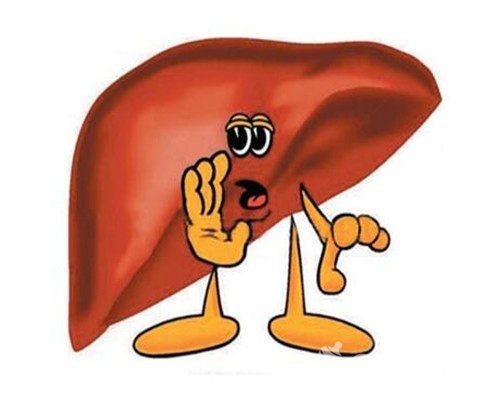
MSL exclusive Medical equipment knowledge sharing!
Watching a lot of medical equipment news and learning some knowledges of medical equipment. All the hardworking just to be a profesional medical equipments supplier and service better for you. We hope the information about medical we provide could helps you to choose your suitable products.
|
Biotransformation effects of liver Clicks:Updated:2018-04-23 14:04:08 |
|
Biotransformation effects of liver
The liver has biotransformation effects on many non-nutritive substances such as various drugs, poisons and certain metabolites in the body from both in vivo and in vitro. They are completely decomposed by metabolism or excreted in their original form. This effect is also referred to as “detoxification function.” Some of the toxicants are biotransformed and can be converted into non-toxic or less toxic, easily excreted substances; but there are also some substances that happen to be the opposite and the toxicity is enhanced (such as pseudo-neural transmitter formation. ), the solubility is reduced (such as certain sulfa drugs).
There are many ways of liver biotransformation. Generally, water-soluble substances are often excreted from urine and bile as prototypes; fat-soluble substances are easy to accumulate in the body and affect cell metabolism. They must be inactivated or converted by a series of enzyme systems in the liver. Water-soluble substances, and then discharged. The liver is the main drug metabolism organ
Its biochemical reactions can be divided into four forms: 1 oxidation. For example, ethanol is oxidized into ether and acetic acid in the liver and then oxidized to carbon dioxide and water. This type is also known as oxidative detoxification. 2 reduction. Certain drugs or poisons such as chloramphenicol, nitrobenzene, etc. can be converted by reduction, trichloroacetaldehyde is reduced to trichloroethanol in vivo and loses its hypnotic effect. 3 hydrolysis. Hepatocytes contain a variety of hydrolytic enzymes that can hydrolyze a variety of drugs or toxicants such as procaine, procainamide, and the like. 4 combination. It is the most important way for liver biotransformation, combining drugs or poisons with glucuronic acid, acetyl-CoA (acetylation), glycine, 3'-phosphate adenosine-5'-phosphate sulfate (PASA), glutathione, etc. .

Some scholars classify them into two types based on the unique enzyme system, namely phase I reaction (through oxidation, reduction, hydroxylation, sulfur oxidation, deamination, dehydroxylation or methylation and other biochemical reactions, including mixing Oxidase, sometimes toxic, (such as isoniazid acetylation) and phase II (such as microsome uridine dinucleotide glucose transfer enzyme to promote certain substances and aldonic acid synthesis of aldehydes The saccharine is easy to remove from bile and urine). Due to all biochemical reactions in the liver, various enzyme systems in liver cells are required to participate.
Therefore, in cases of severe liver disease or portal hypertension and portal-venous shunts, special attention should be paid to drug selection, mastering the dose, and avoiding an increase in liver burden. Taking a certain drug for a long time can induce the increase of related enzyme activities, resulting in "tolerance" or "drug resistance", and due to the poor specificity of related enzymes, resulting in "cross-resistance" or drug synergy, causing adverse consequences. 80-85% of normal human blood bilirubin is derived from erythrocyte hemoglobin, and the rest are from heme hemoglobin heme (such as myoglobin breakdown) and bone marrow immature red blood cell destruction (null erythropoiesis), also known as bypass Bilirubin refers to a tributary of the metabolism of heme.
The non-conjugated bilirubin (indirect bilirubin) formed from mononuclear phagocytes and hepatocytes is fat-soluble and easily penetrates the blood-brain barrier, placenta, intestine, and gallbladder epithelium and interferes with cell metabolism. Plasma albumin binding (direct bilirubin) can make it lose its original fat-soluble. In the course of the uptake, binding, and excretion of bilirubin by the liver cells, any obstacles in the process can increase blood bilirubin and cause jaundice. After the bilirubin enters the hepatocytes, it combines with the Y and Z proteins in the cytoplasm to prevent the outward reversal of dispersion. Certain drugs can interfere with the binding of bilirubin to albumin, compete with hepatocyte membrane receptors, or compete with Y proteins, and block the uptake, binding, and metabolism of bilirubin by hepatocytes.
Newborns have low levels of plasma albumin due to hypoventilation of the blood-brain barrier. The Y protein in liver cells is only 4 to 21% of adult humans (5-15 months after birth). The latter is an important cause of physiological jaundice in newborns.
Guangzhou Medsinglong Medical Equipment Co., Ltd
Cell: 0086-138 2644 8637
E-mail: cindy@medmsl.com
|

Address:85th, Baiyun Road, Shiqiao Street, Panyu District, GuangZhou City Sitemap
Tel:+86-20-84899760 Email:Cindy@medmsl.com / cindy@medicalequipment-msl.com Skype:msl_saler01 Mob:+86 138 2644 8637

Connect us in Whatsapp or Facebook Messenger

Messenger
